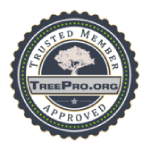Most property owners in Delaware, Pennsylvania have a number of trees in their backyard and although they act as shields of protection all around your property, it’s best to know whether it’s safe to keep the tree or cut it down. One of Mother Nature’s masterpieces, trees decorates your landscape; and in a magical way, they are beautiful and comforting. Apart from the numerous emotional, physical and mental benefits they bring, the happiness and peace  they bring is just unexplainable. It’s therefore important to understand that in the event that the tree poses risks to the people who shelter under its shadow or to any objects underneath it, then it’s time to call in a professionally trained arborist. An arborist is an individual who has taken a comprehensive examination that’s usually administered by the International Society of Arboriculture and passed. This test involves knowing all aspects that concern tree service and care; from evaluation down to disease and insect management.
they bring is just unexplainable. It’s therefore important to understand that in the event that the tree poses risks to the people who shelter under its shadow or to any objects underneath it, then it’s time to call in a professionally trained arborist. An arborist is an individual who has taken a comprehensive examination that’s usually administered by the International Society of Arboriculture and passed. This test involves knowing all aspects that concern tree service and care; from evaluation down to disease and insect management.
For starters, your arborist will determine whether the tree is a desirable species or not. Some undesirable types of tree species include;
- Bradford pear
- Mulberry
- Black locust
- Box elder
- Siberian elm
- Norway maple
- Mimosa
- Empress tree
- Willows among many others
These trees possess a couple of characteristics that make them fit into the category of undesirable species. One of them is that they have weak wood, which is prone to breakages and in addition to that, they also drop a lot of debris. There is also the fact that they have shallow roots, which can damage pavements and lawns. You’ll also observe that this type of trees often has insects or diseases possessing them and this is usually specific to a tree type.
In the event that the tree is about 50% damaged, then it’s considered unhealthy. This is because the damaged section will cause the tree to decline thus causing abnormal or limited appearance or growth. Herbicides can also damage some trees so if you observe that your tree/trees have misshapen leaves, it’s probably been caused by the herbicide used. The good news is that with time, the tree will recover and the leaves will return to their natural shape.
 Whenever you observe any seams, vertical cracks, large wounds or dead branch stubs; know that your tree is experiencing internal decay. If the main trunk is severely damaged, the arborist will advise that you remove the tree. But in case the area damaged is 25% or less of the whole trunk’s circumference, then chances of the wound healing gradually are high hence no need to remove it.
Whenever you observe any seams, vertical cracks, large wounds or dead branch stubs; know that your tree is experiencing internal decay. If the main trunk is severely damaged, the arborist will advise that you remove the tree. But in case the area damaged is 25% or less of the whole trunk’s circumference, then chances of the wound healing gradually are high hence no need to remove it.
Is your tree hollow? Trees have life support tissues and these are located on the trunk’s outer edges. It’s possible for a tree to live for many years even though it has a hollow trunk but when the trunk is compromised strength-wise, this then makes it dangerous. This happens when one third of the tree’s interior is either rotten or hollow.
Dead branches are another factor that might make you think twice about saving your beloved tree. In case you see that your tree’s tops are broken or it has large damaged limbs, know that it already poses a danger to property and people. In the event that the percentage of the damaged branches is less than 25%, chances of the tree surviving are high. It’s important to remove any rubbing or crossing branches and while at it, correct any narrow branch angles originating from the main trunk since they are prone to splitting. Consider tree pruning when the tree is young and an arborist is the person trained for this procedure.
When one side of the tree is dead, then consider the services of a certified and professional arborist who will come and evaluate the tree and determine the cause. This is because the tree will, of course, be lopsided and dangerous. The cause for this is trunk or root damage on that particular side and the arborist is the only one who can determine whether tree removal is necessary or it should be left as it is.
Also, if you see any epicormic shoots or sprouts coming from the tree’s base then know that this indicates severe stress meaning something is not entirely right with the tree. This is characteristic to trees that have suffered a construction injury due to a recently constructed new home or over exposure to sun as a result of soil compaction or the thinning of a forest.
Another thing you should factor in is lightning in that if you live at the highest point in your area and right next to your home is a tall tree, do call an arborist who will ground your tree with copper cable systems for the purposes of preventing your tree from getting struck and exploding in the middle. Decide to save your tree today by calling an arborist and you’ll be glad that you did!



